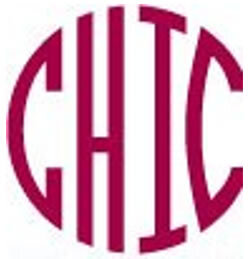The Orthopedic Foundation of Animals is a program that has dedicated more than 50 years to the advancement of Canine Health. This is a highly respected depository of canine health information. In addition to providing breeders, buyers, veterinary professionals, and canine enthusiasts with 50 years worth of records, OFA continues to support advancing research. The organization’s mission is “To improve the health and well-being of companion animals through a reduction in the incidence of genetic disease”
The parent club for each breed establishes a list of criteria necessary for all breeding stock. These tests are the recommended tests of commonly found diseases or afflictions in the breed. For potential puppy buyers, CHIC certification is a good indicator the breeder responsibly factors good health into their selection criteria. There are other health screening tests appropriate for the breed and, there are other health concerns for which tests have not yet been developed.
For Standard Poodles, the required screenings are:
Hip Dysplasia (one of the following)
OFA Evaluation
PennHIP Evaluation
Eye Examination by a boarded ACVO Ophthalmologist
Results Registered with OFA
Health Elective (One of the Following tests)
OFA Thyroid evaluation from an approved laboratory
OFA SA Evaluation from an approved dermapathologist
Congential Cardiac Exam
Advanced Cardiac Exam
We test beyond these recommended standards. In addition to these requirements, we screen
Elbows
Patellas
Shoulders (coming soon)
If interested in learning more about the CHIC program, click here.
These tests are expensive. on average we spend between $1000 to $2000 testing each parent. these tests are done before even one puppy is produced.
we do these tests because we believe that every puppy deserves the best chance at a healthy, happy life.
Below is a detailed guide on using the OFA website to research a dog’s pedigree. I am going to use Bellatrix’s pedigree as an example.
This is Bella’s five-generation pedigree. Quick tip on reading a pedigree chart. The information on the top half of the pedigree is for the sire, the bottom half is the dam. The order remains consistent moving back through the generations. The BOLDED information is the registered name and any earned titles. Below the registered name is the registration number for and any health numbers on file with OFA. In Bella’s case, the only listed number for her health testing is EYE20, she has much more testing than eyes. This discrepancy is due to the difference in time since this pedigree was requested vs. when the tests were performed.
Step one to research a dog that you know the name/registered information for is to navigate to OFA’s landing page. In the orange box located at the top of the page input the Registration Number for the dog.
If no registration number is know, part of the dog’s registered name can also be used to search. Bella’s Registration number is PR20452908.
OR
Hit Enter and, if there is any documented health testing available in the database, it will be displayed.
Click on the name in blue and you will be taken to a more detailed view that includes any tested direct relations. In Bella’s case she has a half-sibling that has been tested.
Now, lets say you wanted to know more about a dog listed further back in the pedigree. You could take that dogs name or registration number and input that information into the orange box.
Lets look at Bella’s Great-Grandfather on her Sire’s side: PR17025206 Gingerbreds Cinnfullysweet Red Hot Remington
Here we can see several generations worth of data for this dog. You can click through the various links and view different dogs that have been tested throughout the years.


